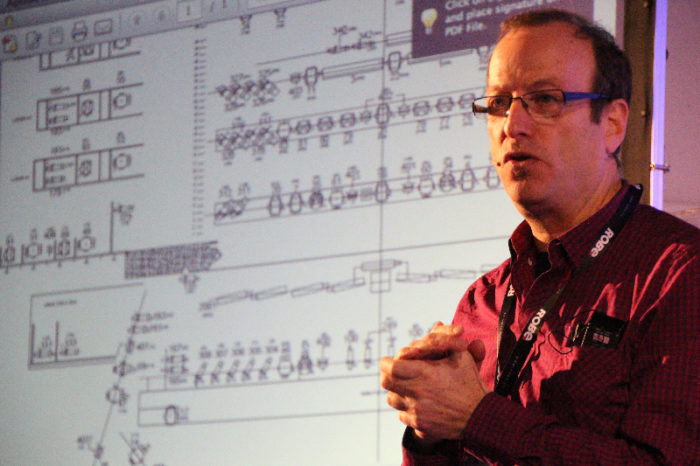
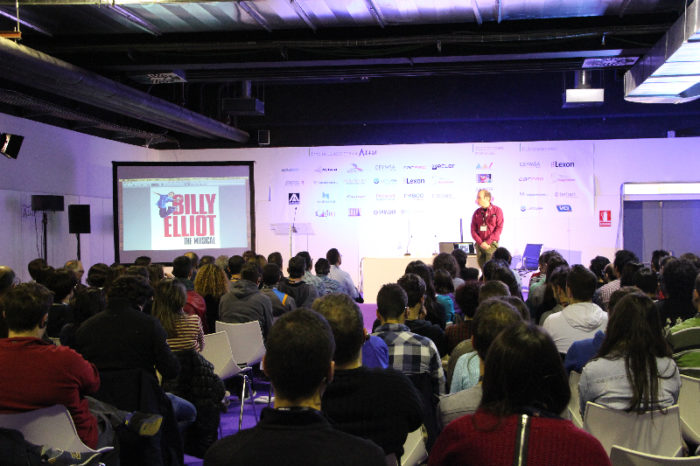


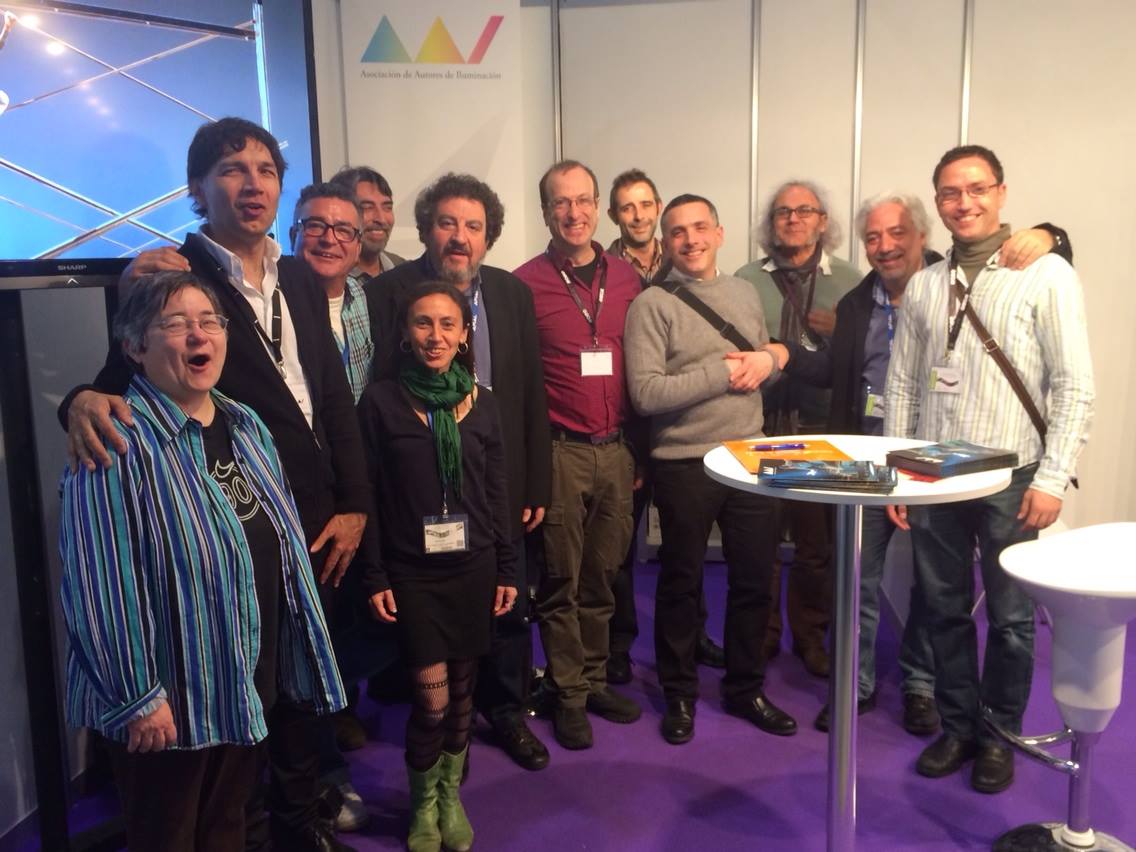
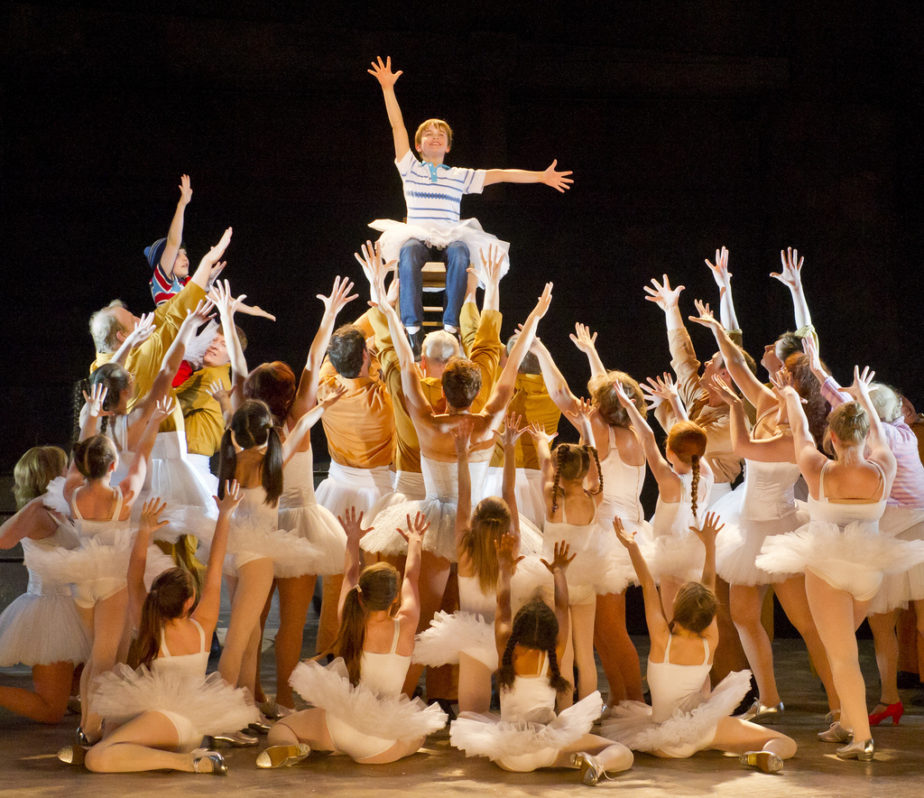


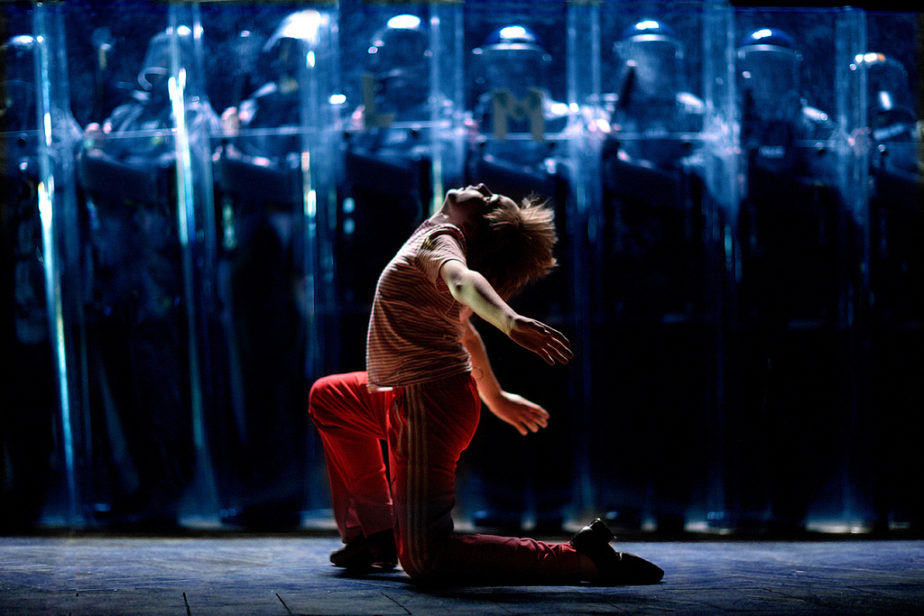

In the room set up for the event, a few minutes before, when everything was almost ready, there was a blackout, and is that in the blacksmith’s house … you know. It was a joy to see how the audience filled the hall, the call had created expectation. Once introduced, the speaker began to talk about his beginnings in the theatre and the long process that this entailed.
Rick Fisher was born in Philadelphia where he grew up and began his training. He has been living in London for the last 20 years. He is president of the ALD, the Association of British Lighting Designers.
He told us about how in his childhood he was drawn to plays and musicals in which he dreamed of being an actor. He tried to become one but soon discovered he had no talent for it. In return he felt a new attraction: working in the shadows, behind the scenes. He observed that a lot could be created there in the service of what was unfolding on stage. He was admired by the alderman’s work, and that’s what he wanted to be. At the university, where there was a good theater department, he practiced all the arts that organize the stage: scenery, lights and especially stage management, in the 70s.
Once in London he worked in small companies where, due to the precariousness of means, he had to perform multiple tasks. Little by little he realized that what he really liked was the lights. He explained that, although he still kept in his mind the idea of the regency, the world of gelatins, the colours, exerted a powerful attraction on him. Suddenly, without any specific training, he found himself involved in the lighting designer activity and… “here I am” as he simply expressed to us. He settled in London for good in 1996, gave up van driving, sound, lights and “above all” stage management and moved into the world of big productions. He said with grace: “The bigger the project, the less you want to be asked for it…”.
He went on to tell us about the Billy Eliot project, a project with 20 years of history, with a film and theatre version. A great versatility was necessary, both for scenery and lights. This was demanded by the numerous scene changes and the movement of actors and extras, from the intimate scenes to those of great presence and evolution of personnel and effects. At the same time, we wanted the scenography not to overwhelm the human dimensions and especially those of the protagonist child. Thus, the main element was a low, descending, cut wall, defining the empty space of the stage. It was all wood textures. The walls were practicable and could be moved to the point of emptying the space. Very important was a structure that emerged from a hatch and hid again, it was Billy’s house with his room at the top as a turret. The fire curtain was also used as a scenic element. Rick had to study with the set designer the street lighting, because the wall that embraced the space was a problem to let the light through. They agreed to use street towers with a machinery device that allowed the luminaires to be lowered and raised so that they were flush with empty space and then went up to the holes arranged as windows in the wall. On the other hand, it was necessary to use movable spotlights that allowed different directions and colours at each point of light.
They found that there was not enough space in the theatre for the proposal, it was too big and they had to rent the lighting equipment: table, lights, regulators. Difficulties also for the placement of the scenery, to get the right place between the rods. He conceived the VL 3000 as the “soul” of the design because of the brilliance of its light, with them he focused areas and terms, with wash type luminaires he completed and shaded. The exhibition was very generous, with the plan on the screen was explaining us the types of projectors and arrangement, I do not have room here to expose it, but the lighting professional appreciates these samples.
He then showed us images of various scenes, not of the desired quality for which he lamented. He talked about how very beautiful effects were achieved with just a few fixtures, other times there are many light sources, but the look is simple. How different atmospheres were created within the set, such as the sensation of solitude within the room, or the organization of areas of attention by darkening, “containing” the light in other points. He said something as important as that they tried to avoid the clichés of musicals that shock the audience by giving them everything done, this was an unusually dark musical where, although there was no lack of colour, fantasy, even gobos – he doesn’t like gobos – they tried “not to do everything for the audience”, to make them work their imagination.
The generous artist gave an exhibition for more than two hours and we loved it, but I don’t have space to explain more, so if you want more, I’ll leave you my notes. I will end with this precious phrase from the master Fisher: “The best instrument we can work with is the imagination of the audience”.
Pau Ferrer (AAI)
Full video of the Masterclass : https://www.youtube.com/watch?v=QnmRr3NMv04
Phil Marfleet, Chief Electrician at the Victoria Palace Theatre in London, where “Billy Elliot, the musical” has been performed since 2005: http://www.youtube.com/embed/_kjddGbgEII?autoplay=1&showinfo=0
Official website of the musical: http://billyelliotthemusical.com
Photos of the musical : Alastair Muir and David Scheinmann




